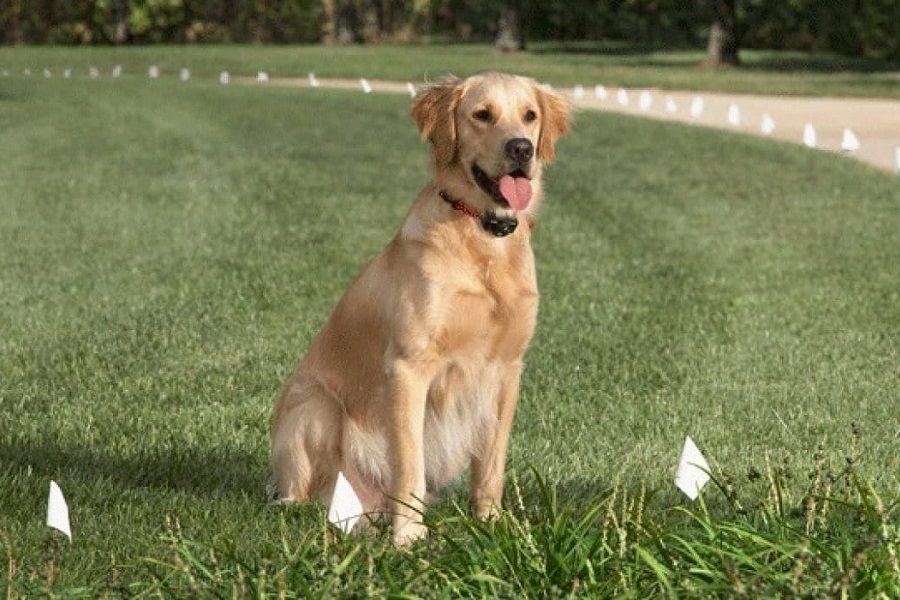Last Updated: 1 month ago
We all know ticks are the most dangerous pests for dogs, so we actively search for them when grooming our pets.
However, most people don’t perceive ants as threats to dogs, or crickets, for that matter.
Today, we’ll talk about five pests that might be harmful to your dog and what to do with them, so let’s start from the top
Fleas
These flying pests can attack both humans and dogs. Flea bites may be annoying, but they can also be quite dangerous to mammals with flea allergies.
It’s nearly impossible to keep your dog away from fleas indefinitely. Playful dogs will eventually catch a few, which will breed a small colony if given enough time and if undisturbed. Combing your dog is a good way to reveal fleas, after which you should give it a bath, drowning out the pests.
You can handpick fleas if there aren’t many of them. Assuming you’ve both combed and bathed your dog, plucking the stragglers is usually enough to get rid of the flea problem.
When this fails, you’ll need heavier artillery in the form of a homemade anti-flea solution. A bit of apple cider mixed with vinegar will eliminate dozens of fleas at a time.
Rinse and repeat, and you’ll eventually kill off all the fleas infecting your dog. Consider using flea repellant products to minimise the chances of your dog being infected.
Fire Ants
Fire ants will be hostile towards humans and other animals if they feel threatened. There are several circumstances in which they can be dangerous to dogs, specifically.
First and foremost, dogs aren’t wearing protective footwear like humans and will be attacked by multiple fire ants as they walk over their homes.
Fire ants are known to spray a special form of venom when biting their victims; this venom is, for the most part, a water-insoluble alkaloid that stings and can lead to a series of health-related problems.
The closer the individual bite wounds are, the bigger the bump will form after a while. Skin bumps caused by fire ant bites cause pain and high levels of irritation; worst of all, they are harder to heal and can get infected when scratched.
While humans could avoid touching the pustule, knowing the consequences, dogs would instinctively paw at the wound and infect it quickly.
Pluck any ants that may have caught onto your dog’s fur to prevent further biting and infestation. Having an Elizabethan collar will prevent your dog from licking the infected wound.
To treat the venom-induced symptoms, you can give your pet antihistamine pills. If the symptoms persist, take your dog to a vet.
Mosquitos
Mosquitoes are a nuisance to humans, and even more so for dogs. First and foremost, the itchiness caused by mosquito bites is troublesome for all pets, as they’ll scratch the wounds quite frequently.
Open wounds pave the way for various infections and can easily be mistaken for fleas. Essentially, mosquitoes can bite your dog several times at different spots; without much thought, many pet owners resort to flea pesticides in such cases.
Although this is a good way to prevent additional pests from infesting your dog, the scratching will continue, the wounds will remain open, and they may become deeper and more dangerous.
Always check your dog if it keeps scratching for longer periods; mosquito bites look different than flea bites and appear similar to wounds caused to humans.
The underlying issue with mosquito bites is the risk of transmitting heartworm disease. Namely, mosquitoes can be hosts to heartworms and will transmit them to a larger host (your dog) via bites.
Heartworms can be lethal to dogs if left unchecked. Symptoms vary from mild coughing and dizziness to organ damage, heart failure, and dire lung disease.
These killer pests can be discovered through blood tests. After an episode of heavy scratching and under the presumption that you’ve uncovered mosquito bites on your dog, consider paying your vet a visit.
One of the best ways to repel mosquitoes from your pet is to avoid walking your pet near big pools of water and use dog-friendly pest repellents. Just to be extra safe, use preventive heartworm treatment on your dog.
Bees
These gorgeous flower-pollinating insects, sadly, don’t perceive fun in the same way dogs do. Our pets can easily irritate a bee or two by trying to play with them and getting stung in the process. Removing a bee stinger isn’t hard, and usually the symptoms are mild.
However, some dogs are allergic to bee or wasp poison. Even if your pet isn’t, certain areas are very difficult to manage, most notably the mouth.
If your dog believes bees to be a threat, it may instinctively try to bite them. By chewing a bee, they’ll get stung in the process, and their mouth will grow swollen.
It’s imperative to remove the bee stinger with a set of tweezers. Pull the stinger as you would pull a tick, so as to prevent more venom from being released. Keep the stung area cool with an ice pack until you make it to the vet.
Crickets
While crickets generally won’t dare attack dogs, the reverse scenario is quite likely. Dogs may be alerted by the sound crickets are making or simply by their movements. Most dogs would test this pest by pawing at it, but in many cases, dogs would dive into their jaws first.
Crickets aren’t venomous, and even if they fight back, they aren’t poisonous either. However, they are hosts to the sinister horsehair worm parasites. These parasites can outgrow a tall human, which means they can cause a series of troubles for a smaller dog.
Fortunately, the latest studies revealed horsehair worms don’t find dogs as suitable hosts. If a dog eats a horsehair worm-infested cricket, though, the organism may adapt to the new atmosphere. Visit your vet at least once every two to three weeks to minimise this risk.
We hope that this guide was helpful to you and that you have learned something new today about pests that are harmful to your dog and what to do with them. Make sure you are staying safe in these times we are all going through, and have a good one, guys!



